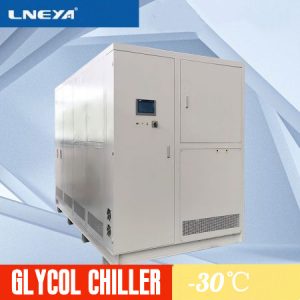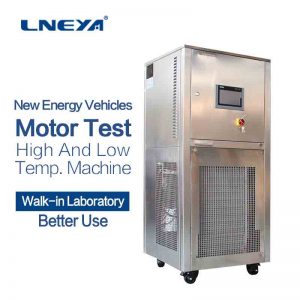The Method That Small Water Cooled Chiller Needs To Follow When Charging Refrigerant
In our life, we believe that everyone is very familiar with refrigeration. In the central air conditioning and industrial production process cooling industry, small water cooled chiller is more common. This unit is composed of a compressor in the fuselage, a horizontal shell and tube condenser, an evaporator, a thermal expansion valve, and some related parts. Under the cooperation of these auxiliary parts, the overall small water cooled chiller is compact in structure, convenient in operation and control, and is popular among the public in the market.
For refrigeration systems that do not have a high pressure reservoir and a low pressure vapor-liquid separator, the control of refrigerant charge is particularly important. Because the refrigeration system is a condenser and also acts as a high-pressure reservoir, the refrigerant is stored in the condenser, and the condenser is cooled. The heat dissipation area is reduced and the condensing pressure is increased, resulting in a decrease in cooling capacity.
For the control of the refrigerant charge of such small water cooled chillers, the following methods are followed during the filling process:
First, touch the temperature of the condenser casing.
The upper outlet of the condenser outlet is heated above the outlet, and the outlet below the outlet is cool. (There is a description of the high temperature exhaust of the compressor in the inside. The cooling indicates that the small water-cooled chiller is a liquid space.)
Second, look at the inspiratory pressure.
Corresponding to the temperature of the refrigerant water in the evaporator. (That is, corresponding to the evaporation temperature.)
Third, look at the compressor return pipe temperature.
The high-temperature unit return pipe should be cooled and dew, but it can be dew condensation to the compressor return valve; the low-temperature unit return pipe should be frosted, but the frost can be connected to the compressor return valve. If condensation or frost builds up on the compressor casing, liquid refrigerant will enter the crankcase, causing the compressor to run back and cause liquid problem.
Recommandations connexes
-
Introduction to the setting and operation of the ethylene glycol chiller at minus 30℃
992The minus 30 degree ethylene glycol chiller is a single-fluid low-temperature refrigeration unit with compressor refrigeration. How should the user set it better when operating it? 1. Automatic logout time Automatic logout means that when a user ...
Voir les détails -
Méthode de vérification des problèmes du système d'huile de lubrification de l'usine de refroidissement à vis
998Tout le monde accorde plus d'attention au système de circulation du réfrigérant et au système de circulation de l'eau glacée du système de fonctionnement de l'usine de production de froid à vis. Cependant, le système de lubrification est souvent négligé par tout le monde. En fait, ce système de...
Voir les détails -
New energy vehicle testing comprehensive test box filled with heat transfer oil
1303In order to ensure the correct operation of the machine, the new energy vehicle inspection integrated test box must ensure that no air bubbles remain in the system, ensure that the heat transfer medium outlet is connected to the lower interface of...
Voir les détails -
Temperature conditions of new energy vehicle batteries
895When automobile manufacturers continue to improve battery life to overcome the driver's mileage anxiety, the energy density of the large batteries installed is also gradually increasing, which means that the temperature monitoring function of the...
Voir les détails
 LNEYA Industrial Chillers Fabricant Fournisseur
LNEYA Industrial Chillers Fabricant Fournisseur













